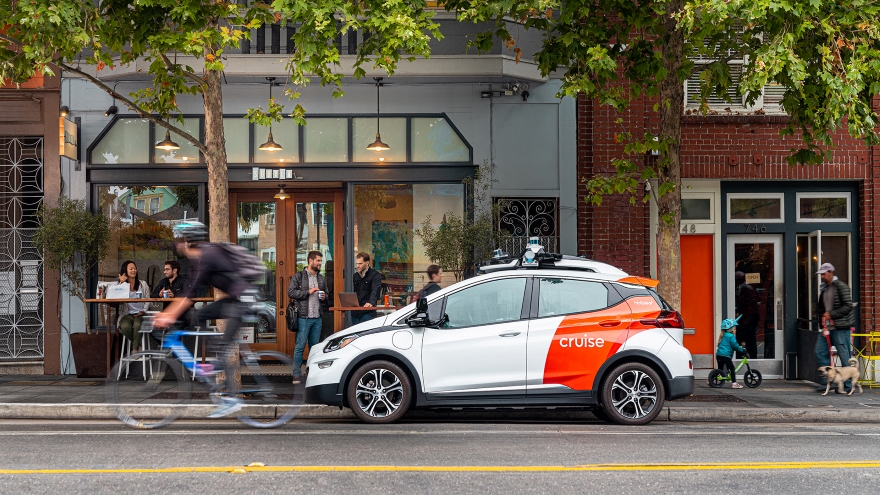Study finds consumer confidence in self-driving vehicles is sinking

A Cruise robotaxi in San Francisco. Photo courtesy of Cruise.
Consumer confidence in fully automated self-driving vehicles has declined for a second consecutive year, according to J.D. Power’s latest research.
The 2023 U.S. Mobility Confidence Index Study showed the score for consumer readiness for automated vehicles dropped two points to 37 on a 100-point scale from last year’s study, adding up to a five-point decrease from 2021.
The study, conducted in collaboration with the MIT Advanced Vehicle Technology Consortium, is based on responses to an online survey of 3,000 U.S. vehicle owners in July. It measures consumer readiness for AV technology in personal vehicles, commercial vehicles, public transit, riding if unable to drive due to age or injury, sharing the road with other Avs, and consumer purchase intent.
In a news release, J.D. Power said consumers show low readiness to accept the technology in all of its metrics. The lowest level of comfort is with riding in fully automated self-driving vehicles and using fully automated self-driving public transit.
Consumer confidence is much higher among consumers who have ridden in a robotaxi, the study found. Their score of 67, the company said, is indicative of experience being critical to full-scale AV adoption. Consumer comfort is higher in the Western U.S., a region familiar with AV testing and deployments, such as robotaxis in Phoenix and San Francisco.
“Experience with automation appears to greatly improve confidence in the technology,” said Bryan Reimer, an MIT research scientist and founder of the Advanced Vehicle Technology Consortium.
J.D. Power said overall consumer confidence has been affected by a lack of general knowledge about AV technology development compounded by media coverage that highlights robotaxi and testing failures.
“Consumer trust is fragile, but it’s the foundation on which long-term AV acceptance is built,” said Lisa Boor, senior manager of auto benchmarking and mobility development for J.D. Power. “This first-time feedback from robotaxi riders shows significant growth in consumer comfort levels across any AV application.
“Industry stakeholders must seize the opportunity to build confidence and promote the technology across all transportation modalities through these first-hand experiences but, for success, it cannot be overshadowed by endless deployment issues.”
The study found consumers don’t understand the differences between the various levels of automation, believing that being ready to take control requires the same responsibility as driving the vehicle without any assistance. And many believe fully automated self-driving personal vehicles are available for purchase today – for example, 22% of respondents erroneously said Tesla’s Autopilot feature is fully automated.
Consumers did correctly identify actual instances of fully automated vehicles currently being used in some markets for deliveries (by Amazon, Domino’s and others), robotaxis (Waymo, Cruise, Uber, etc.) and commercial transport applications.
“As trust is built over time but erodes quickly, stakeholders may need to find new ways to proactively educate potential users on the advantages and current limitations of vehicle automation systems,” Reimer said.
“Automated driving technology is still very much in an evolving and testing stage with improvements occurring quickly. Consumers’ understanding of where we are on the path to long-term automated mobility needs to be calibrated as today’s systems are not designed to enable more risky driving.”
The study also showed consumers had concerns about hacking prevention and data privacy, with 78% saying they want to understand what is being done to prevent AVs from being hacked. And it found vehicle owners appreciate that vehicle automation can remove the risk of risky behaviors like texting and allows them to do things they couldn’t while driving, such as sleeping. The study includes insights into the activities and in-vehicle features consumers desire when they no longer need to drive or watch the road.
To download J.D. Power’s white paper about the study, click here.


